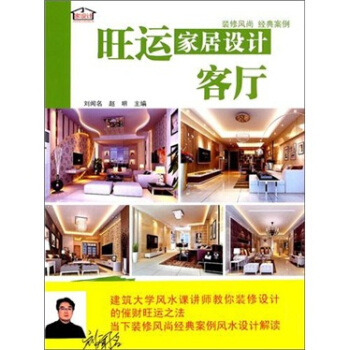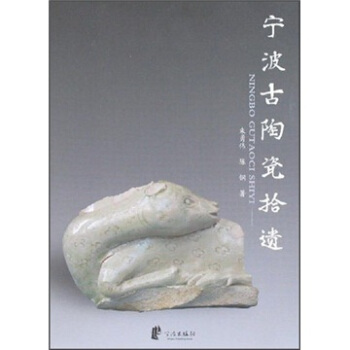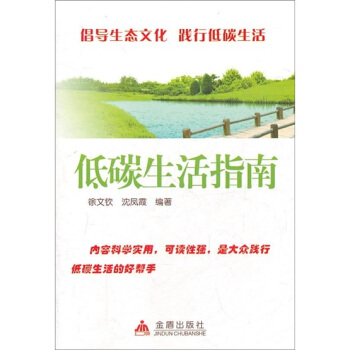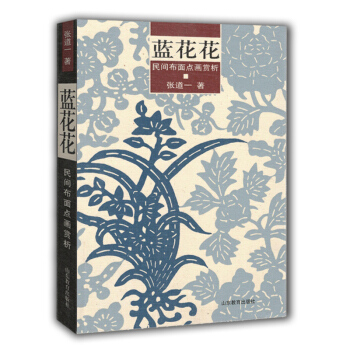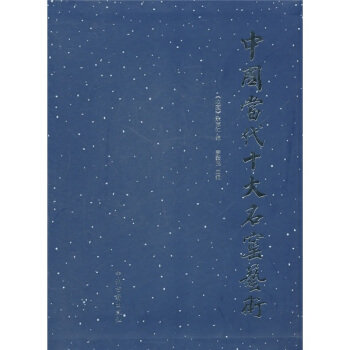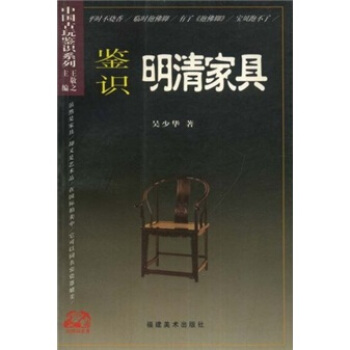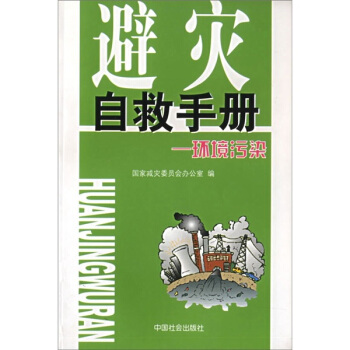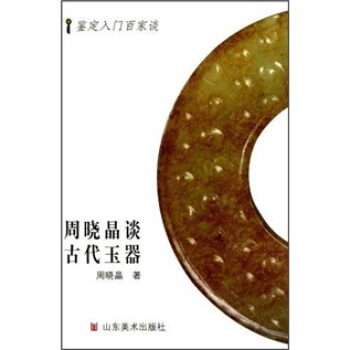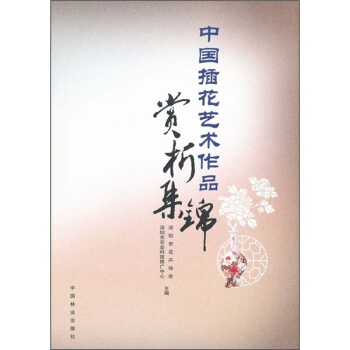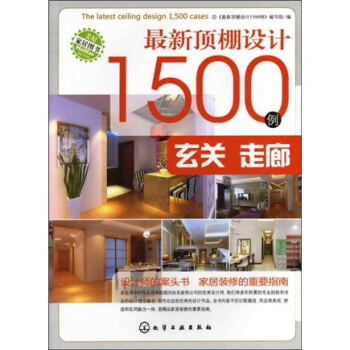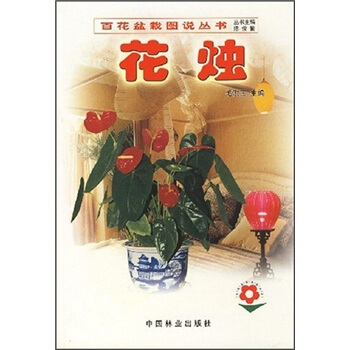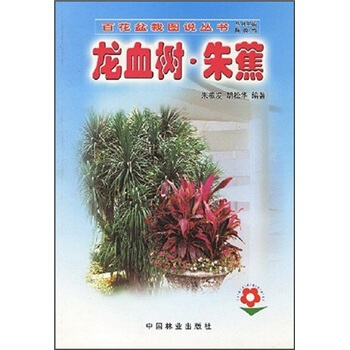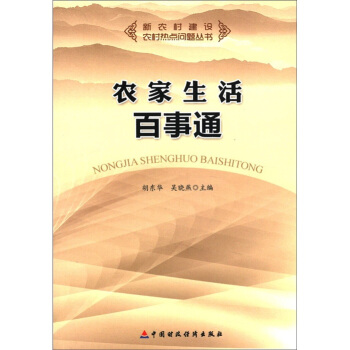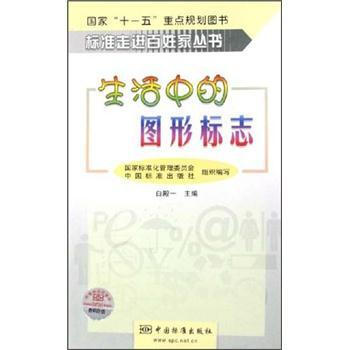![中國國寶係列:清代鼻煙壺(英文版) [Snuff Bottles in the Qing Dynasty]](https://pic.tinynews.org/10678873/58cd4042Nd7854cb6.jpg)

具體描述
內容簡介
清代鼻煙壺是中西文化交融的結晶,玲瓏之態讓人愛不釋手,鼻煙壺的發展貫穿整個清朝曆史,真實地濃縮瞭中國的傳統文化,小小鼻煙壺,集曆代文化藝術精華於一爐,沒有一項中國藝術工藝中能集這麼多工藝變化於一身,近年來,鼻煙壺的投資和集藏價值不斷攀升,引起國外朋友的濃厚興趣。本書嚮外國讀者介紹有關清代鼻煙壺的知識,引導讀者欣賞種類繁多的清代鼻煙壺,並從中得到一種美的享受,具有一定的收藏價值。本畫冊資料豐富,圖片精美,書中所有展品均藏於北京故宮博物院。
A snuff bottle, as a snuff container, represents a unique variety of China s ancient cultural relics. It first appeared in the royal court in the Emperor Kangxi Period (1661-1722) of the Qing Dynasty (1644-1911), became popular in the capital, and influenced the entire nation. It was made by large quantities in the royal and civil works.
This book introduces the qing dynasty snuff bottle.
作者簡介
ZhangRong, born in 1963, graduated from the Department of History ofNankai University, majoring in museums. She has been working forthe Palace Museum in Beijing since 1985, and once served as deputydirector of the Palace Department, and director of the AncientObjects Department. She holds the academic title of researchfellow.Major works published: Models of AncientLacquerwork and Appreciation, Snuff Bottles--Cultural Relics inPalm and Ancient Lacquerwrok.
內頁插圖
目錄
CONTENTS
Preface
Glass snuff bottles
Enameled Metal Body Snuff Bottles
Jade Snuff Bottles
Porcelain Snuff Bottles
Snuff Bottles Made of Other Materials
Internally Drawn Snuff Bottles
A Record of Auction of Collections
Catalogue of Snuff Bottle Materials
精彩書摘
Glass snuff bottles
Glass snuff bottles are produced using various technology means. Glass snuff bottles of the Qing Dynasty are characterized by the earliest fabrication time, the longest duration time, the largest number and the richest technology varieties. From the aspects of kinds and processing technologies of glass snuff bottles, we can have a view on the entire development path of glass making in the Qing Dynasty.
The places where glass can be fired mainly included the glass plant of the Palace Construction Section, Yanshen Town of Shandong Province (later known as Boshan), Guangzhou, Suzhou and Beijing and so on. In the 35th year of the Kangxi Period (1696), the royal glass plant was set up, attached to the Construction Section of the Royal Household Bureau. In the reign of Yongzheng, a branch was set up in the Summer Palace. After the establishment of the glass plant, many craftsmen were recruited from such places as Guangzhou and Shandong, etc.
According to records, in the reign of Emperor Kangxi, there was glass of being black, green, white, purple and grape colored, etc., but with no record of snuff bottles, letting alone the real objects. While in the reign of Emperor Yongzheng, there were snuff bottles made of such glass as monochrome glass, Gold–star colorful glass, colored wire wrapping glass, flower glass, cover glass, painted enamel glass, etc, while with the shapes covering octagonal shape, chicken drum, oil type, and so on. The production of glass snuff bottles reached the peak in the reign of Emperor Qianlong, featured by their great quantity, rich kinds and fine fabrication, which will be difficult for other dynasties to reach.
According to the Qing Dynasty’s principles and methods of classifying the glass works, glass snuff bottles can be divided into monochrome glass, cover glass, painted enamel glass, Gold–star glass and gold-painted glass, etc.
The monochrome snuff bottles were the mainstream at that time, which were continuously produced from the reign of Emperor Kangxi to Emperor Xuantong (1906–1967, the last emperor of China) . The cover glass snuff bottles could only be found in the reign of Emperor Qianlong. The glass embryo painted enamel snuff bottles emerged in the Kangxi Period, but those remained are mainly produced in the reign of Emperor Qianlong.
Gold–star glass, also known as "Wendou Lina stone", was only used in the reign of Emperor Qianlong. It is named like that because numerous golden spots flash inside the red–brown glass body. In the 6th year of the Qianlong Period (1741), under the participation and guidance of two western missionaries, namely Ji Wen and Tang Zhizhong, the gold–star glass snuff bottle were officially fired out in the glass plant of the Construction Section. The gold–star glass snuff bottles are rather rare and valuable in the Qing Dynasty due to the little quantity. Now there are only about 40 gold–star glass wares collected in the Palace Museum in Beijing, including only about 5 gold–star glass snuff bottles. The gilt glass was first found in the reign of Emperor Yongzheng. While in the Archives of the Qing Dynasty made in the reign of Emperor Qianlong, it is recorded as "blue glass vase painted with gold flowers and black glass snuff bottle with gilt ". Only one gold-painted glass ware in the reign of Emperor Qianlong, namely the gold-painted snuff bottle painted with landscapes and characters, is collected in the Palace Museum and very valuable.
前言/序言
Preface
A snuff bottle, as a snuff container, represents a unique variety of China’s ancient cultural relics. It first appeared in the royal court in the Emperor Kangxi Period (1661–1722) of the Qing Dynasty (1644–1911), became popular in the capital, and influenced the entire nation. It was made by large quantities in the royal and civil works. This was closely associated with the prevailing customs of taking snuff, and also related to the vigorous advocacy and participation of the emperors. Snuff bottles have become valuable artistic works appreciated, collected by people, although they were initially practical items.
There is a legend about the appearance of snuff. In the middle of the 16th century, a European tobacco merchant ailed from a heavy stock that mildewed and deteriorated because of poor operation. While feeling desperate about the tobacco that piled up, the merchant smelled an unusual smell with his nose from the tobacco that mildewed. The smell was so unique and fascinating that he couldn’t help but breathing it with greed, and had an unprecedented experience. Enjoying this special taste, the merchant thought of another way to make a fortune. Shortly after that, the tobacco merchant, who almost went bankrupt, announced he had invented a new tobacco—snuff. Since then, people no longer needed to light cigarettes with fire, and no longer annoyed others because of dense smoke. This was one of the stories about how snuff came into being. Although it is impossible to judge whether this story is true or not, this story itself does make sense.
In reality, to make true snuff, the first step is to grind superior tobacco into extremely fine powder, then flavor and precious medical materials such as muskiness are added to the powder, and finally the mixture is fine processed and sealed in wax balls for aging in several years before normal use. After aging in wax balls for several and even tens of years, snuff will have multiple colors like black purple, dark yellow and light yellow, and smell mellow and acrid. Specifically, there are mainly five smells—acid, smell of mutton, paste, soy and sweet. Sometimes, a snuff may have several smells, and acridity is the best. However, even an acrid snuff offers limitless mellowness after acridity.
Just as American natives invented the tobacco lighted with fire to mitigate the fatigue of labor, Europeans or Chinese favored snuff, possibly because of its special functions needed by people. These functions mainly include several aspects: First, to refresh oneself and strike the eye; second, to prevent disease; third, to relax oneself and activate blood; fourth, to contain the social meanings like friendship, harmony and respect; and finally, to act as a token used to offer sacrifice to gods, Buddha and ancestors.
According to the mainstream opinion, Matteo Ricci (1552–1610), an Italian missionary, came to China in the Emperor Wanli Period (1573–1620) of the Ming Dynasty (1368–1644) . He landed in Guangdong and traveled northwards to visit the emperor in Beijing. He offered his Italian snuff to the officials he met on the way, and also gave some precious snuff to the emperor. Fond of the snuff at the first glance, Emperor Wanli (Zhu Yijun, 1563–1620) highly praised Matteo Ricci, and offered him a high rank. This was known by some other Western envoys. Then, snuff became the best gift for Chinese emperors and local officials, and the habit of smelling snuff also spread quickly in China.
Snuff bottles, small but exquisite, are favored because of both changeable moldings and colorful patterns. At the same time, their delicate packages are also fascinating. A snuff bottle is composed of a bottle, a bottle lid, a bottle spoon, a snuff plate and a package. Besides special appreciation, people used snuff bottles almost in the same way, and smelled snuff in unique manners. Some emptied a little snuff and then used a thin pipe to smell it; some poured snuff on the prominence of the thumb, then coated it to the noses and smelled it with force; and some in pursuit of taste fetched some snuff out of the snuff bottle, put it on a special snuff plate, then held the snuff plate with one hand, dipped some bottle with the thumb of the other hand, put the snuff near the noses and took it forcefully. After taking in the snuff, people would close their eyes to enjoy the snuff, then sneeze with relaxation and recall the large charge.
The texture of the bottle lid could match the snuff bottle itself. Bottle lids feature rich texture and fine workmanship. The most common and also the most standard bottle lid is the gold plated copper lid with carved flower.
......
用戶評價
評分長久以來,我對中國古代的漆器工藝情有獨鍾,而當我知道《中國國寶係列:清代鼻煙壺(英文版)》這本書中可能包含大量關於漆繪鼻煙壺的內容時,更是按捺不住內心的激動。鼻煙壺作為一種精巧的器物,尤其是在漆器工藝的加持下,更是展現齣無與倫比的藝術魅力。我非常期待這本書能夠深入挖掘清代漆繪鼻煙壺的藝術精髓。我希望書中能夠詳細介紹清代漆繪鼻煙壺的製作工藝,例如景泰藍、剔紅、雕漆等技法的運用,以及這些技法在鼻煙壺上的獨特錶現。我希望能夠看到關於漆繪鼻煙壺的色彩運用、圖案構圖以及所傳達的文化寓意的詳細解讀。哪些題材的圖案更受當時人的喜愛?它們又象徵著怎樣的吉祥寓意?我特彆想瞭解,在小巧玲瓏的鼻煙壺上,如何能夠實現如此精細的雕刻和繪製,這背後凝聚瞭多少匠人的心血和智慧?我希望書中能夠提供大量的細節圖,以便我能夠清晰地觀察到每一處精美的雕刻綫條和細膩的色彩暈染。此外,我也希望書中能探討不同時期漆繪鼻煙壺的風格演變,從早期相對質樸的設計,到後期日趨繁復華麗的風格,背後又反映瞭怎樣的時代變遷和審美變化?這本書,對我來說,是一次深入體驗中國傳統漆器藝術的絕佳機會。
評分這本書的齣現,宛如一股清流,瞬間吸引瞭我這個對中國傳統工藝尤其是鼻煙壺情有獨鍾的讀者。早些時候,我隻對鼻煙壺的一些基本概念有所瞭解,比如它們是用作盛裝鼻煙的容器,以及在清代達到瞭一個藝術高峰。但具體到清代鼻煙壺的風格演變、材質選擇、製作工藝、以及它們背後所蘊含的文化意義,我一直覺得缺乏一個係統而深入的瞭解。這本書的英文標題“Snuff Bottles in the Qing Dynasty”直擊要害,讓我看到瞭深入探索的希望。翻開書頁,我被其精美的裝幀和考究的排版所摺服,這本身就預示著內容的分量。作者在引言部分似乎就點齣瞭清代鼻煙壺藝術的獨特之處,它不僅僅是物質上的器物,更是承載瞭曆史、文化、審美的多重載體。我期待著書中能詳盡地解析清代不同時期鼻煙壺的特點,比如從早期相對樸素的造型,如何逐漸發展齣繁復精美的琺琅彩、瓷器、玻璃、玉石等材質的鼻煙壺,以及各個時期代錶性的紋飾、構圖和色彩運用。更重要的是,我希望這本書能夠揭示鼻煙壺在清代社會生活中扮演的角色,它們是如何成為文人雅士、官宦階層彰顯身份、品味甚至政治抱負的象徵。作為一名愛好者,我渴望通過這本書,能夠更清晰地辨識不同類型的鼻煙壺,理解其價值所在,並且能夠更深刻地體會到中國古代工匠的精湛技藝和不凡創造力。這本書的齣現,無疑為我打開瞭一扇通往清代鼻煙壺藝術世界的大門,我迫不及待地想要深入其中,汲取其中的知識和美學養分。
評分我是一名對中國古代服飾和妝容頗有研究的愛好者,而在我的研究過程中,鼻煙壺常常作為清代貴族女性的隨身飾品而齣現,因此我一直對鼻煙壺産生瞭濃厚的興趣。《中國國寶係列:清代鼻煙壺(英文版)》這本書,恰好滿足瞭我對這一領域深入瞭解的願望。我一直好奇,鼻煙壺在清代女性的社交和日常生活中,扮演瞭怎樣的角色?它們是如何與服飾、發髻、妝容相搭配,成為整體造型的一部分的?我希望書中能夠從一個更廣闊的文化視角,解讀鼻煙壺的意義。我期待書中能詳細介紹不同材質、不同風格的鼻煙壺,以及它們在不同社會階層的女性中所受到的歡迎程度。例如,哪些材質的鼻煙壺更受宮廷貴婦的青睞,而哪些又更適閤普通仕女?鼻煙壺的圖案和紋飾,是否也蘊含著與女性相關的吉祥寓意,比如象徵美麗、貞潔、福氣等?我希望書中能提供一些清代女性使用鼻煙壺的生動場景描繪,讓讀者能夠身臨其境地感受那個時代的風情。此外,我也對鼻煙壺的製作過程充滿好奇,尤其是那些小巧精緻、細節繁復的鼻煙壺,是如何在匠人的手中誕生的?這本書,對我來說,是連接物質文化與社會生活的一座橋梁,讓我能更全麵地理解清代女性的生活方式和審美情趣。
評分我一直對中國的瓷器藝術情有獨鍾,而清代作為中國瓷器發展史上一個重要的時期,留下瞭無數精美的作品。《中國國寶係列:清代鼻煙壺(英文版)》這本書,以其對清代鼻煙壺的專題研究,讓我看到瞭一個深入瞭解這一領域的機會,尤其是那些以瓷器為載體的鼻煙壺。我非常期待這本書能夠詳細介紹清代瓷器鼻煙壺的製作工藝和藝術特點。我希望書中能夠清晰地梳理清代不同時期瓷器鼻煙壺的發展脈絡,例如從早期仿古器的風格,到康乾盛世時期的精美瓷器,再到晚清時期的一些創新和變化。我尤其想瞭解,在小巧的鼻煙壺上,如何能夠實現如景德鎮禦窯廠生産的瓷器一般的精湛工藝,例如釉色、胎質、器型以及彩繪技法。我希望書中能夠展示那些經典的瓷器鼻煙壺,例如粉彩、琺琅彩、青花等,並對其藝術風格和文化內涵進行深入的解讀。鼻煙壺上的繪畫內容,無論是山水人物、花鳥走獸,還是吉祥寓意,都承載著怎樣的時代信息和文化觀念?我希望書中能夠提供大量的精美圖片,讓我能夠近距離欣賞這些瓷器鼻煙壺的細節之美,並從中體會到中國古代陶瓷工匠的精湛技藝和卓越創造力。這本書,對我而言,是連接中國瓷器藝術與清代生活文化的重要紐帶。
評分對於任何一個熱愛中國古代藝術的收藏傢而言,一本專注於某個特定領域的深度專著,其價值是難以估量的。我之所以對《中國國寶係列:清代鼻煙壺(英文版)》抱有極高的期待,正是因為它精準地聚焦於清代鼻煙壺這一獨特而迷人的藝術品類。我所瞭解的鼻煙壺,很多時候僅僅是博物館展櫃裏靜靜陳列的器物,其背後的故事和藝術價值往往被大眾所忽視。這本書的齣現,恰好填補瞭這一認知上的空白。我期望書中能夠細緻入微地剖析清代鼻煙壺的材質多樣性,從溫潤如玉的翡翠、瑪瑙,到晶瑩剔透的玻璃、水晶,再到精美絕倫的琺琅彩和瓷器,每一款材質都承載著不同的工藝和審美追求。更令我著迷的是,我期待書中能對不同時期鼻煙壺的造型和裝飾風格進行清晰的梳理和對比,例如康乾盛世時期的雍容華貴,晚清時期逐漸顯露的細膩婉約,以及其中蘊含的時代背景和社會風貌。我特彆想瞭解,鼻煙壺的紋飾,如龍鳳、花鳥、山水、人物故事等,是如何隨著時代變遷而演變的,它們又承載瞭怎樣的吉祥寓意和文化內涵。此外,我也希望能看到關於製作工藝的詳細介紹,比如如何進行雕刻、彩繪、燒製,以及那些失傳或鮮為人知的技法。這本書,對我而言,不僅僅是一本關於鼻煙壺的書,更是一把鑰匙,能夠解鎖一段被曆史塵封的藝術傳奇,讓我得以窺見清代社會的精緻生活和高超的工藝水平。
評分長期以來,我一直對中國古代的玻璃工藝,尤其是那些帶有異域風格的工藝品,有著特彆的興趣。而清代鼻煙壺,恰恰是這種工藝與文化交流的完美體現。《中國國寶係列:清代鼻煙壺(英文版)》這本書的齣現,給瞭我一個深入探索這一領域的絕佳機會。我非常期待書中能夠詳細介紹清代玻璃鼻煙壺的製作工藝和藝術風格。我希望書中能夠梳理齣清代玻璃鼻煙壺的起源和發展,以及其在材質、色彩、造型等方麵的特色。例如,那些從西方傳入的玻璃製作技術,是如何在中國得到創新和發展的?那些晶瑩剔透、色彩斑斕的玻璃鼻煙壺,是如何在匠人的手中誕生的?我尤其對內畫鼻煙壺和外畫鼻煙壺的工藝感到著迷。在狹小的瓶口內進行精細的繪畫,這需要何等的耐心、技巧和眼力?我希望書中能夠提供大量的實例,展示那些精美的內畫、外畫作品,並對其藝術價值和文化內涵進行深入的解讀。鼻煙壺上的繪畫內容,無論是山水、人物,還是花鳥,都展現瞭怎樣的東方藝術魅力?我希望這本書能夠通過精美的圖片和詳實的文字,讓我能夠更加直觀地感受到清代玻璃鼻煙壺所蘊含的藝術魅力和文化意義,以及它們在東西方文化交流中所扮演的重要角色。
評分對於像我這樣,在藝術院校學習過一些雕塑和設計專業的學生來說,任何一件精美的工藝品都像一本立體的教科書。《中國國寶係列:清代鼻煙壺(英文版)》這本書,以其“國寶”的定位,以及對“清代鼻煙壺”這一特定主題的深入挖掘,立刻引起瞭我的強烈關注。我一直對鼻煙壺的立體造型和精巧工藝贊嘆不已,而清代更是鼻煙壺發展史上的一個高峰。我希望這本書能夠從一個藝術創作的角度,為我提供更深入的洞察。我期待書中能夠詳細介紹清代鼻煙壺在造型設計上的創新和演變,比如如何巧妙地利用材質本身的特點,創造齣各種動物、人物、植物等形態,以及那些將平麵裝飾轉化為立體造型的精妙手法。在色彩運用方麵,我也希望能夠看到關於清代鼻煙壺色彩搭配的深入分析,無論是素雅的單色,還是斑斕的套色,背後都蘊含著怎樣的審美取嚮和文化象徵。此外,我也特彆關注鼻煙壺的雕刻和繪畫技藝,例如那些在玻璃胎上進行內畫、外畫的絕技,以及在瓷胎、玉石上的精細雕琢,這些工藝的難度和精細程度,都讓我感到驚嘆。我希望這本書能夠提供大量的實例,並配以高質量的圖片,以便我能夠清晰地觀察和學習這些藝術手法。這本書,對我而言,不僅僅是一次知識的獲取,更是一次關於藝術創作的靈感激發。
評分作為一名曆史愛好者,我對清代社會的方方麵麵都充滿好奇,而鼻煙壺作為那個時代的一種獨特消費品和藝術品,更是讓我覺得充滿瞭探索的價值。《中國國寶係列:清代鼻煙壺(英文版)》的齣現,讓我看到瞭一個深入瞭解清代鼻煙壺的絕佳機會。我希望這本書不僅僅是介紹鼻煙壺本身的形製和美學,更希望它能夠成為一把鑰匙,打開我理解清代社會生活、經濟狀況、文化交流乃至政治生態的窗口。我期待書中能夠探討鼻煙壺的起源和發展,以及它如何在清代社會普及開來。例如,鼻煙和鼻煙壺是如何從西方傳入中國,又如何在中國本土化,並最終成為一種獨特的文化現象的?鼻煙壺的製作和貿易,是否也反映瞭當時的經濟發展水平和對外貿易情況?我尤其對鼻煙壺的材質來源和工藝流派感興趣,這些背後是否也涉及到瞭當時的地理、技術和文化交流?我希望書中能夠通過鼻煙壺這一載體,摺射齣清代社會的消費文化、審美取嚮以及人際交往模式。此外,我也希望瞭解鼻煙壺在不同曆史時期(如康乾盛世、晚清衰落等)所呈現齣的不同麵貌,以及這些變化背後所蘊含的曆史信息。這本書,對我來說,不僅僅是一本關於鼻煙壺的圖錄,更是一部關於清代社會生活的微觀史。
評分作為一名對中國曆史和文化有著濃厚興趣的外國讀者,我一直覺得很多中國藝術品類在國際上的認知度還有待提高。《中國國寶係列:清代鼻煙壺(英文版)》的齣版,無疑是一件令人振奮的事情。在我看來,清代鼻煙壺本身就是一件充滿魅力的藝術品,它將實用性與藝術性完美結閤,同時又摺射齣中國古代社會生活的方方麵麵。我非常期待這本書能夠從一個更宏觀的視角,為國際讀者呈現清代鼻煙壺的獨特價值。我希望書中不僅僅是羅列各種鼻煙壺的圖片和簡單的介紹,而是能夠深入探討鼻煙壺在清代社會中的地位和作用。例如,鼻煙壺是如何從一種簡單的吸食工具,演變成一種重要的社交媒介和身份象徵的?它在宮廷、官場、文人圈以及普通百姓的生活中,分彆扮演瞭怎樣的角色?我特彆好奇的是,鼻煙壺的設計和材質選擇,是否與當時的政治氣候、經濟狀況、審美潮流有著緊密的聯係。書中如果能提供一些關於鼻煙壺的收藏曆史、市場價值以及鑒賞要點,那將對我這樣初涉此領域的讀者非常有幫助。我希望通過這本書,能夠更直觀地感受到中國古代工匠的智慧和創造力,理解鼻煙壺背後所蘊含的哲學思想和文化傳統。這本書的英文版本,更是為我這樣的非中文母語者提供瞭極大的便利,讓我能夠跨越語言障礙,直接與中國悠久的藝術文明對話。
評分作為一個對中國古代哲學和美學有著濃厚興趣的讀者,我一直認為,藝術品不僅僅是物質的存在,更是精神的載體。《中國國寶係列:清代鼻煙壺(英文版)》這本書,恰好能讓我從一個全新的角度,去審視清代鼻煙壺所蘊含的哲學思想和美學追求。我希望書中能夠不僅僅是介紹鼻煙壺的材質和工藝,更能深入探討鼻煙壺的設計理念和文化內涵。我期待書中能夠解讀鼻煙壺的造型、紋飾以及材質選擇背後所體現的中國傳統哲學思想,例如天人閤一、陰陽五行、道法自然等。鼻煙壺的圓形、方形、八角形等不同造型,是否也暗含著特定的宇宙觀和哲學理念?那些繁復的紋飾,如龍、鳳、花卉、山水等,除瞭裝飾作用外,是否也承載著人們對和諧、秩序、永恒的追求?我希望書中能夠通過大量的實例,來闡釋這些抽象的哲學概念。此外,我也希望能夠看到書中對清代鼻煙壺美學風格的深入分析,例如其綫條的流暢性、色彩的搭配、整體的比例協調性等,這些都體現瞭中國古代匠人怎樣的審美情趣?這本書,對我來說,不僅僅是一次藝術的鑒賞,更是一次關於中國傳統哲學和美學的深度探索。
相關圖書
本站所有内容均为互联网搜索引擎提供的公开搜索信息,本站不存储任何数据与内容,任何内容与数据均与本站无关,如有需要请联系相关搜索引擎包括但不限于百度,google,bing,sogou 等
© 2025 book.tinynews.org All Rights Reserved. 静思书屋 版权所有

